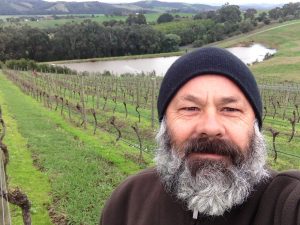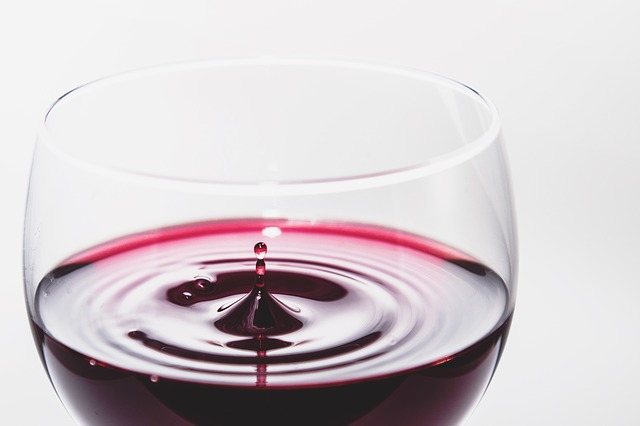Rhys Howlett chats to two winemakers to find out their thoughts on the benefits of fining and filtration against their potential impact on wine quality.
Fining and filtration are two of the more commonly used F-words in the Australian wine industry with many winemakers holding strong views about their use, overuse or non-use. I recently spoke with two winemakers to find out what they believe is lost and what is gained through various fining and filtration processes and how they manage those opposing consequences in the winery.
The most common fining agents in use are as follows: gelatin (animal-derived protein); isinglass (fish-derived collagen/ protein); egg white (albumen); casein (milk protein); bentonite (clay from volcanic ash); carbon (from charcoal); and polyvinylpolypyrrolidone (PVPP – synthetic polymer).
Each can be more or less effective in winemaking depending on the desired outcome. As the AWRI advises, “Selecting the appropriate fining agent for a given wine or juice depends on many factors: the most important being the destination market of the wine and the wine style sought by the winemaker… Fining should be carried out only when necessary and using lower rather than higher addition rates, as it is possible to remove positive flavour characteristics.”
When it comes to filtration, the more common methods are crossflow, pad, sterile membrane and earth filtration. Winemakers have long-debated the merits or otherwise of fining and filtering wines and with the rise of consumer interest in vegan-friendly products, this will be a fertile area of research and development in coming years, particularly in relation to animal-derived fining products.
Peter Rattray is a winemaker for Berri Estates, an Accolade Wines brand producing significant volumes of wine, mostly for export markets. His approach is to assess each wine on its own merits.
“For each batch I conduct a bench trial with different fining agents and at different rates to see which ones have the best outcome,” Rattray said. “Fining agents should be used at the lowest possible dosage needed to achieve the desired effect. Any over-addition and there is a risk of loss of mouthfeel, colour and aroma.
“I generally use the same fining agent, however the rates do vary. This is to create a consistent wine from one year to the next. We mainly use skim milk and PVPP for whites. Bentonite is also used for clarity but like the other additives it can strip too much flavour if it’s over added. Egg white, gelatin and skim milk are used for the reds. There is the potential in future for vegan-friendly’ options too.”
Rattray says there are two main reasons for fining wines at Berri Estates: “One is to remove any harsh, bitter flavours and unwanted aromas; the other is to help with wine stabilisation.
“There are also two main reasons we filter our wine – aesthetics and microbial stability. On the aesthetic side, filtration gives the wines clarity and makes them more appealing to the consumer. As with many commercial wines on the market some of our wines are bottled with residual sugar and therefore need to be filtered before packaging to remove any unwanted microorganisms. Crossflow filtration is the desired form of filtration, preferably only performed once, when all of the fining agents are in and just prior to bottling.”
When it comes to what is lost in the process, Rattray explains “over-filtration and fining can lead to a loss of mouthfeel, however if addition rates are kept to the lowest rate possible and the wine is filtered only when required, I believe there is no discernible loss of mouthfeel.
“The benefits of fining and filtration for commercial wines far outweigh the negatives. In the end, filtration is a very effective winemaking tool that is used to clarify a wine and to make sure it is microbiologically stable.”
Over in the Yarra Valley is one of Australia’s more colourful wine characters, Timo Mayer. Mayer doesn’t fine or filter any of his wines and is a passionate advocate for minimal handling.

“We’re not ‘no interference’, we’re minimal interference. Just step in if something goes wrong, let the vineyard do the talking,” Mayer explained.
“When I came to the Yarra in 1996, working in a big winery, everything went through the RDV filter, the earth filter, the sterile membrane. Working in a big winery and seeing the before and after I thought, ‘I’m never going to do that’.
“Running stuff through filters or finers, it takes good stuff out as well. Mouthfeel, colour, weight, texture, everything. Softness too; it makes them hard once you fine them and filter them. They’re hard, disjointed. That luscious fruit, that beautiful fruit, it just goes. It dies.”
To mitigate the risks of spoilage, Timo’s wines have no residual sugar and therefore less chance of unwanted microbial activity post-bottling.
“My wines are bone dry and everything’s gone through full malo, red and white. That way nothing can really happen because everything has already happened! There’s nothing left, just put it straight in the bottle, job’s done. My wines aren’t protein stable and they’re not cold stable. I don’t cold filter and I don’t use bentonite so all my wines are unstable but I tell people – if something goes hazy, it means somebody nuked it, got it too hot.
“It used to be a sign of great wine having tartrate in the bottle in the olden days but now people freak out and think you have to chill it for a week. Costs you a fortune, cold stabilization. I just tell people, ‘if you leave it in the fridge a few weeks it might throw a tartrate’. I tell people if they leave my wine in the car it will go hazy, if they leave it in the fridge it will get deposits. Whatever is in my barrels is in your bottle. All I do is add a little sulfur.”
For many winemakers more attuned to fining and filtration as part of their regular wine processing, questions about wine clarity may come to mind – how to keep wines clear and bright without fining and filtration? For Mayer, a key factor is not moving the wines.
“My barrels do not get moved unless they’re empty. When people drive barrels around on forklifts, take them off, then they empty them, by that time they’re all shook up. You’ve just had 10 months of settling but the whole settling process is for nothing because you move them.
“My wines are so clear it’s not funny without any filtration because I don’t move them for the year, or 10 months, and then when I empty them I don’t take them down with a forklift and drive them around. They actually get emptied where they’ve stood for 10 months. And I’m quite generous with the racking, I leave a lot of s**t in the bottom so I can sell a bright wine without any filtration.
“My wines aren’t cloudy – you don’t have to have cloudy wines to be unfiltered. Everything stays on lees for one year, there’s only one racking, one handling into the blending tank, a sulfur adjust, and then bottled. Everything stays on lees, nothing’s racked off, whether it stinks or not.
“All you have to do is not be greedy and take the last few litres of lees at the bottom, although I keep all the lees, the bottom 10 litres, and that is actually the best wine I make – Riserva Privada. That’s a wine you can’t even buy it’s so good! All the lees are blended together – Chardonnay, Pinot Noir, Syrah, Cabernet, Nebbiolo, Gamay – the whole cellar, in one bottle. We put a double magnum on auction the other day, it got $950! And that one is filthy, you can’t see through it!”
Minimising wine movement is important for large-scale winemakers as well, as Peter Rattray explains.
“We try and keep movements down to a minimum to save cost – it’s a bit like filtering in that the more you do it the less efficient you are,” he said.
One piece of advice from Mayer for other winemakers looking to reduce or eliminate fining and filtration is to keep it clean in the winery.
“If you go down that path you really need to be anal about cleaning – that is the way you protect yourself against sh**ty wines. That means cellar equipment, tanks, hoses, pumps, everything is sterilised beforehand. We use Oxyper – it’s like Napisan for the winery.”
Other than that, just “keep it basic”, he says. “The less you do the better, just do something when s**t goes wrong.”
This article was originally published in the February edition of the Grapegrower & Winemaker magazine. Click here to subscribe.
















